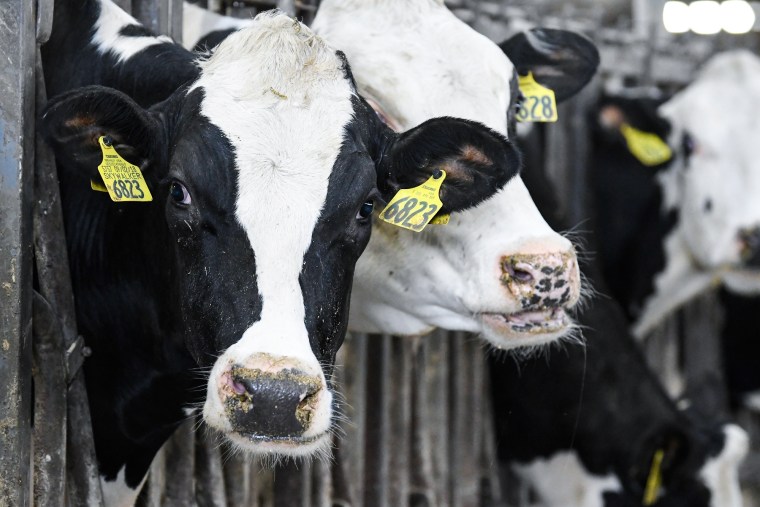The Food and Drug Administration said Wednesday that dairy products including cottage cheese and sour cream are safe to eat amid the outbreak of the bird flu virus in dairy cows.
The agency has been conducting tests on 297 pasteurized retail dairy products after findings last week showed that fragments of the virus had gotten into the commercial milk supply.
The tests showed that the products didn’t contain live virus that could make people sick, the FDA said Wednesday.
The new results, though still preliminary, “affirm the safety of the U.S. commercial milk supply,” Don Prater, acting director of the FDA’s Center for Food Safety and Applied Nutrition, said during the briefing. The samples come from 38 states.
In addition, the FDA has tested powdered infant and toddler formulas and found no evidence of bird flu virus. It was unclear how many formula samples were tested.
Prater said the latest findings confirm that the pasteurization process inactivates the virus, making it unable to infect people. The FDA is also testing raw milk for live virus, though it strongly advises against drinking raw, unpasteurized milk.
Bird flu has now been detected in 36 dairy herds in nine states: Colorado, Idaho, Kansas, Michigan, New Mexico, North Carolina, South Dakota, Ohio and Texas.
Those cases appear to have all originated among herds in Texas, then spread as cattle were moved across state lines to other farms.
In affected herds, about 10% of the cows show symptoms, Dr. Rosemary Sifford, chief veterinary officer at the U.S. Department of Agriculture, said during the call. Most recover on their own within about two weeks, she said.
Sifford said that it appears the virus spreads between cows through affected raw milk, which contains high levels of the virus.
There is no evidence yet that this strain of the bird flu, called H5N1, spreads easily from person to person. But the concern is that the longer the virus spends in mammals, it could mutate into a form that does.
For now, Sifford said, that doesn’t seem to be happening.
“We are not seeing any changes in the virus that would indicate it is in a position to be more easily spread between people,” Sifford said.
The risk to the general public remains low, said Dr. Demetre Daskalakis, director of the CDC’s National Center for Immunization and Respiratory Diseases.
One person, a dairy worker in Texas, has been diagnosed with the virus since the outbreak was detected in dairy cows. The person’s case was mild and the only symptom was conjunctivitis, or pink eye.
The Centers for Disease Control and Prevention said Wednesday that more than 100 people have been asked to monitor themselves for symptoms for 10 days after coming into contact with an infected animal.
Around 25 have been tested for the virus, Daskalakis said.
He said there is no indication of “unusual flu activity in people, and that includes avian influenza.”
But there have been reports that other cases may have gone undetected.
Multiple dairy workers in Texas were sick with fevers, body aches, upset stomach and eye infections at the same time the bird flu was working its way through cows in Amarillo, Dr. Barb Petersen, the veterinarian who discovered what was making the animals sick, previously told NBC News.
No hospitalizations or deaths have been reported.

